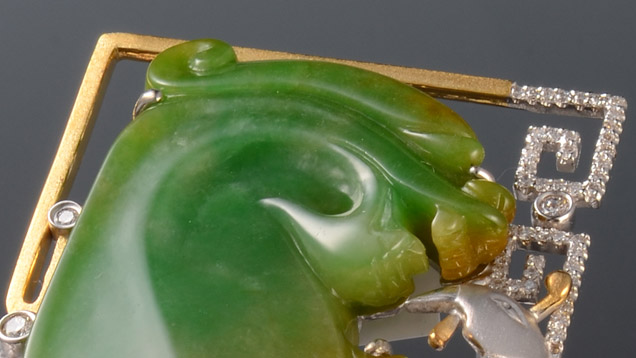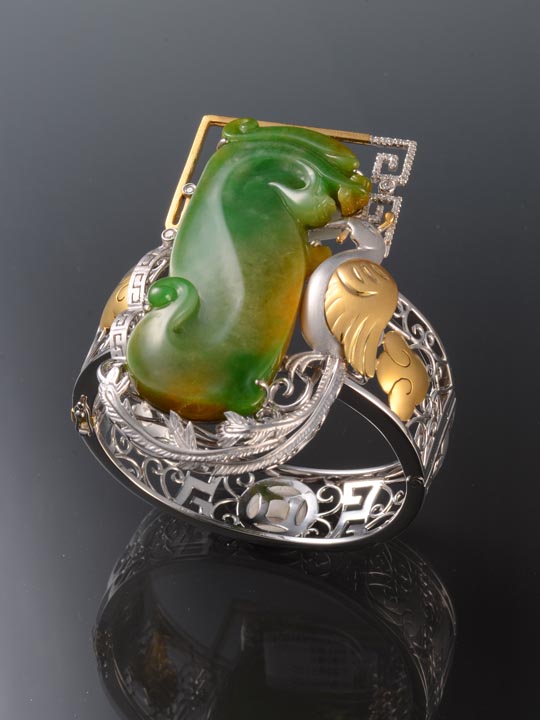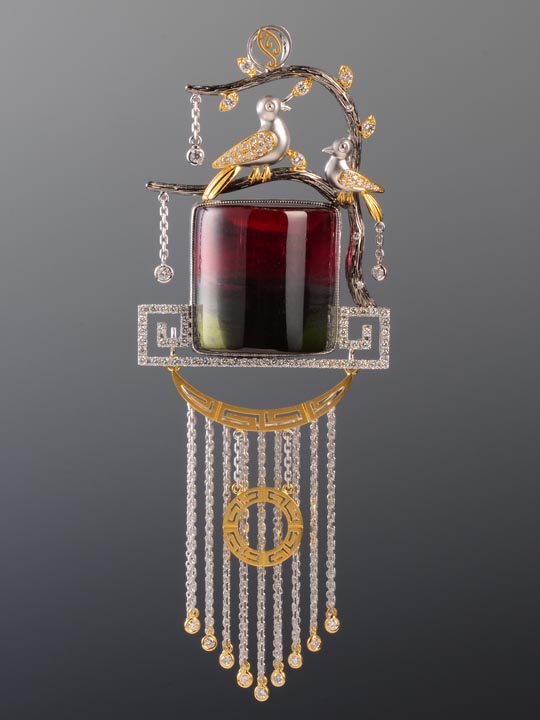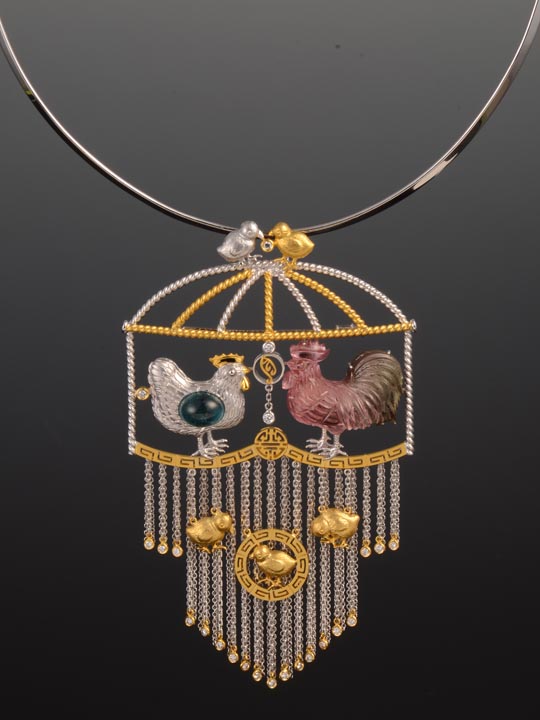Let Jewelry Tell the Story:
An Interview with Chinese-Style Designer Yue-Yo Wang
November 27, 2013
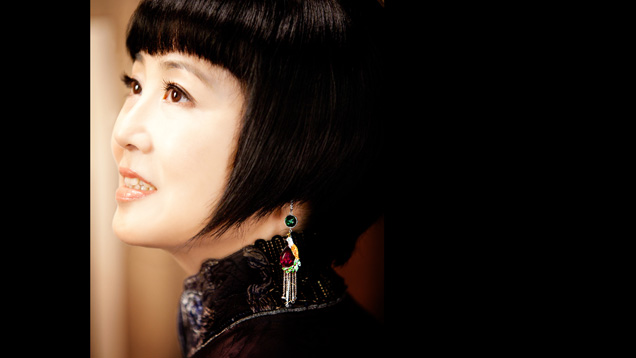
Yue-Yo Wang, a jewelry designer from Taiwan, has devoted herself to traditional Chinese jewelry design. She has combined the Chinese knotting art with modern jewelry design and manufacturing techniques to create her own pieces. Every finished piece has its own story.
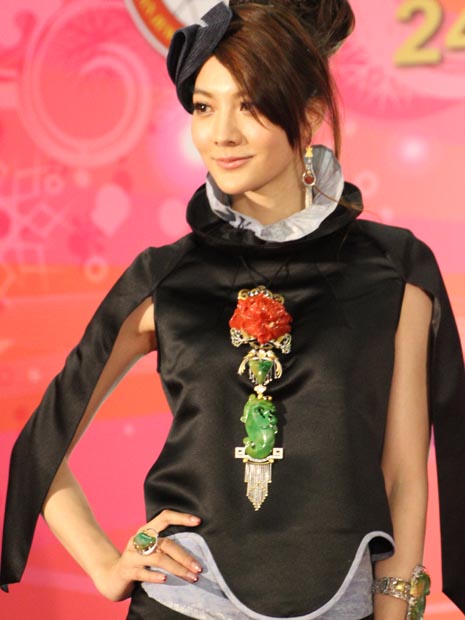
Yue-Yo’s designs feature large, high-quality materials, applied in the “Chinese Style.”
Photo courtesy of Wang Yue-Yo Creative Jewelry Design.
Photo courtesy of Wang Yue-Yo Creative Jewelry Design.
Chinese Knotting Art
In China, knotting art can be traced back to around 1600 BC. Before that time, knotting had a more practical purpose, which was to record important events or numbers on a daily basis. After that, with the development of written record-keeping, knotting gradually lost its practical purpose and became more decorative.Chinese knotting art experienced a peak from around 600 AD until the early 1900s. Along with most of the other arts, its development paused during a 100-year span of social upheaval in China. Currently, knotting is being picked up once more by younger generations, who have developed a high appreciation for this ancient art. Knotting threads are made of a variety of materials. Knotting art can be used for room decorations or jewelry pieces. China has even established qualifying exams at different levels for experienced knot makers.
At one time, Yue-Yo enjoyed a very relaxed and easy life as a housewife and collector of Chinese artistic teapots. When an unforeseen event affected her husband’s business, her easy life ended and she had to start making an income. She began a small business to sell her teapot collection along with some of her knotted teapot covers.
She gradually fell in love with knotting and decided that she could use it to add to her profits. She spent time developing her knotting skills and, after a short period of time, became a well-known knot maker. People advised her to establish a knotting art education program and many students came to learn from her, some of them from overseas.
Although knotting products and classes increased her profits, they still required a lot of labor and sold for relatively low prices. She often had to work extra hours or overnight to complete orders. This situation inspired her to look for a more efficient way to add value to her products. She tried using knotting techniques on clothes, decorations, and other articles. Then she came up with the great idea of combining knotting art with modern jewelry manufacturing methods.
She was not yet a jewelry designer, so she passed most of the knotting work to her students and set out to learn jewelry design. Accomplishing this turned out to be a great advantage for her jewelry company, which was very successful even when the global economy was suffering.
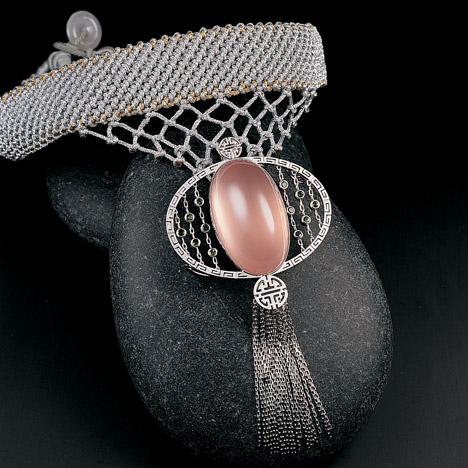
Knotted thread was used to create the wrapping band on this jewelry piece. Photo
courtesy of Wang Yue-Yo Creative Jewelry Design
courtesy of Wang Yue-Yo Creative Jewelry Design
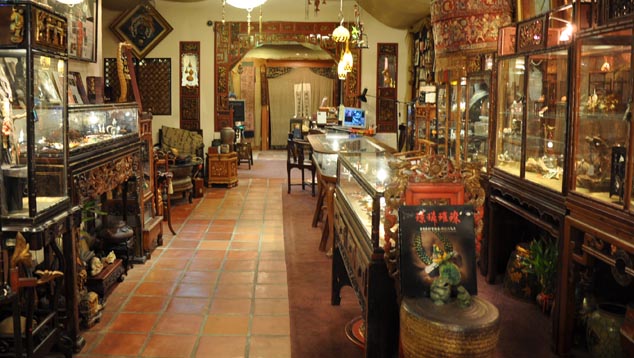
The headquarters of Wang Yue-Yo Creative Jewelry Design in Taipei. Photo courtesy of Wang Yue-Yo Creative Jewelry Design.
Personal and Company Growth
Yue-Yo has been part of the jewelry design industry for about 20 years. In that time, her company has experienced several important development stages.From 1993 to 1999, Yue-Yo Wang Creative Jewelry Design concentrated on promoting the design concept of “Chinese style” jewelry. They participated in many large international jewelry shows to attract international consumers and build the company image. From 2000-2005, Yue-Yo and her colleagues increased their participation in a variety of social works while further developing their jewelry design and manufacturing techniques.
Around 2005, she sensed the rapid development and huge potential of the mainland China jewelry market. She and her team headed west to explore this major market. So far, since then they have opened more than 10 stores all over mainland China, including their guild store, which opened in 2007 in Beijing. In 2008, Yue-Yo was asked by Beijing Shanyuan Jewelry Company to jointly design the Beijing Olympics souvenir crystal dragon stamp. This event gave her and her designs more public exposure and also made her more confident about the future of “Chinese style” jewelry.
In 2012, Yue-Yo turned another dream into reality by forming the Taiwan Creative Jewelry Design Association. She hopes that this organization will attract more jewelry designers who focus on artistic jewelry design and would like to spread the Chinese culture to the rest of the world.
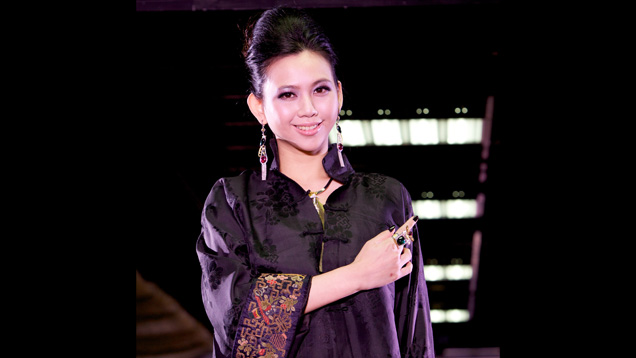
Yue-Yo designs not only jewelry, but also “Chinese style” clothing. Her jewelry and clothes go perfectly together. Photo courtesy of Wang Yue-Yo Creative Jewelry Design.
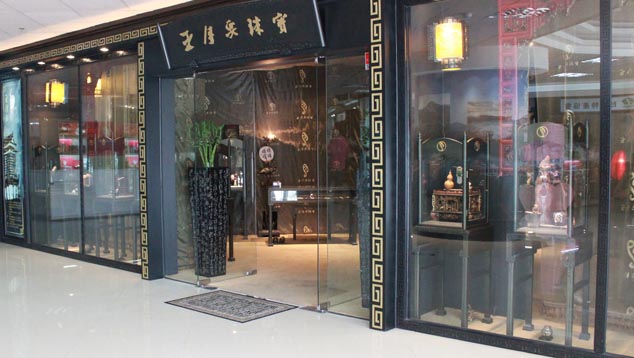
This is the exterior of the company’s guild store in Beijing. Photo courtesy of Wang Yue-Yo Creative Jewelry Design.
This slideshow exhibits representative Chinese style jewelries as designed by Yue-Yo Wang.
Jewelry Design Concepts and Inspirations
A careful look at Yue-Yo’s design always reveals some traditional Chinese symbols and some elements from Chinese knotting art, like long tassels and thread patterns The main focus of her designs is to combine different symbols to create a scene or a story.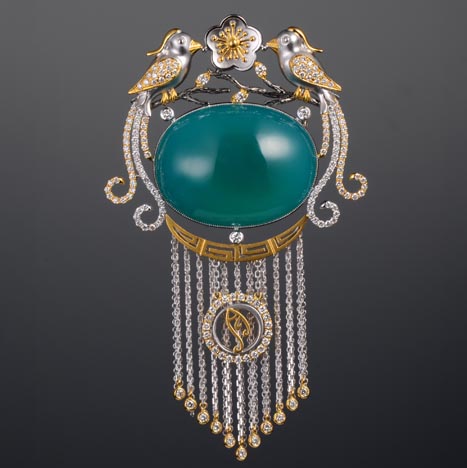
Birds, flowers, tassels, and Chinese character patterns are common elements in
Yue-Yo’s designs. Photo courtesy of Wang Yue-Yo Creative Jewelry Design.
Yue-Yo’s designs are usually inspired by the stones in her hands. She believes that every gem has its own spirit, and she is inspired to find it and express it to people. Since her main business is now high-end customized design for consumers, she pays a lot of attention to the quality of the gem materials and the manufacturing details of her jewelry. She employs her own jewelers, so it is very easy for her to work with them and pass along her ideas to them. Some of her jewelers have more than 30 years of experience in the industry.Yue-Yo’s designs. Photo courtesy of Wang Yue-Yo Creative Jewelry Design.
Materials that she uses most commonly in her designs include opal, coral, jadeite, tourmaline, and chalcedony. She likes coral the most, because coral is one of the three symbolic gems of Taiwan. Before, rough coral was often exported to Japan and other countries to be carved, so she felt that the Taiwanese did not take full advantage of their own gems.
She began to use coral in her knotting projects, attracting respect and appreciation from coral dealers. Then she found that the real high-quality corals are not fit for knotting because holes usually needed to be made. She now uses other high-quality material in her high-end design products.
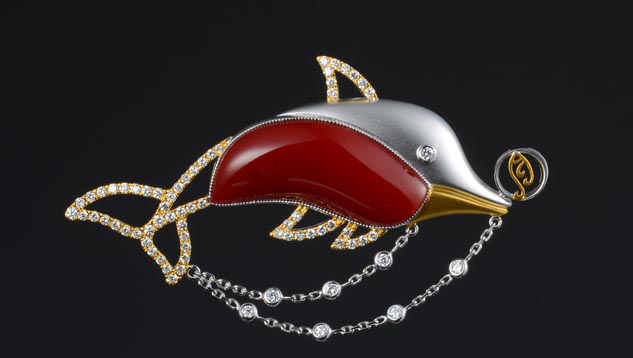
High-quality coral from Taiwan is Yue-Yo’s favorite gem material to use in her haute couture products. Photo courtesy of Wang Yue-Yo Creative Jewelry Design.
Passing Skills to the Next Generation
Yue-Yo Wang is not just a designer; she is also a great instructor. She enjoys talking to young people. At every jewelry show she participates in, she likes to talk to young students who want to be jewelry designers.She still teaches knotting and jewelry design to young people (Fig.9). Many of her students started good careers after being trained and helped by her. In the future, she plans to work more on jewelry design education and the spread of Chinese culture, working through her own company and the organization she formed.
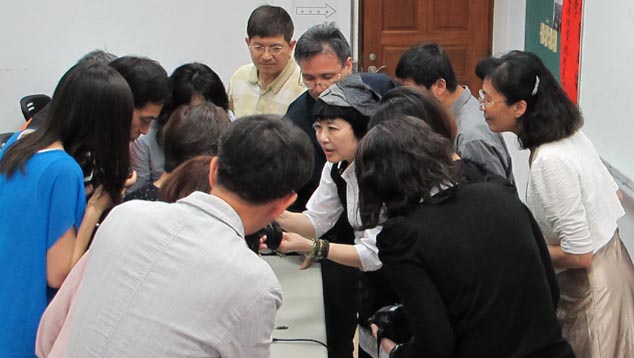
Yue-Yo teaches jewelry design students in order to pass her design skills to the next generation. Photo courtesy of Wang Yue-Yo Creative Jewelry Design.
About the Authors
Doctor Tao Hsu is the Technical Editor of Gems & Gemology. Andrew Lucas is Manager, Field Gemology, for Content Strategy at GIA Carlsbad.
Acknowledgments
The authors would like to express appreciation for GIA Carlsbad’s support in sending us to China to observe the Changsha Mineral Show in May, 2013. If we hadn’t been there, we would not have had the chance to meet Yue-Yo Wang and interview her. Special thanks to Yue-Yo Wang and Mr. Zhong from Wang Yue-Yo Creative Jewelry Design for providing us with the nicely selected photos in this report.
